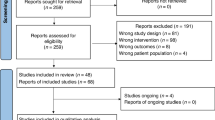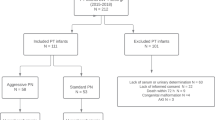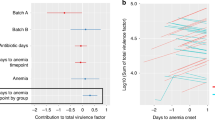Abstract
ABSTRACT: Twenty-three preterm infants with respiratory distress syndrome (mean birth weight 1.07 kg, SD 0.24 kg) were randomly assigned to receive glucose alone or glucose with amino acids (1.5 g·kg−1·d−1) i.v. beginning on the 1st d of life. Blood ammonia and serum urea, CO2 content, sodium, potassium, chloride, and ionized calcium concentrations were normal and did not differ between treatment groups. Nitrogen balance was significantly greater in the group that received amino acids [88 (SD 54) versus −135 (SD 45) mg·kg−1 d−1]. In 12 infants (seven, glucose-only; five, glucose and amino acids), leucine kinetic studies were also performed on the 3rd d of life. These 12 infants received a 4-h primed constant infusion of L-[1-13C] leucine. Blood and breath were collected and analyzed for [1-13C]ketoisocaproate and 13CO2, respectively. Leucine turnover and oxidation were calculated. Both leucine turnover and oxidation were significantly higher in the group receiving amino acids than in the glucose-only group [241 (SD 38) versus 164 (SD 25) μmol·kg−1·h−1 and 71 (SD 22) versus 40 (SD 17) μmol·kg−1·h−1, respectively]. In addition, the calculated rate of protein synthesis was higher in the group receiving amino acids [6.9 (SD 1.1) versus 5.0 (SD 1.2) g·kg−1·d−1]. These data indicate that the i.v. administration of amino acids (1.5 g·kg−1·d−1) to ill preterm infants beginning on the 1st d of life improves whole-body protein balance as a result of increased protein synthesis.
Similar content being viewed by others
Log in or create a free account to read this content
Gain free access to this article, as well as selected content from this journal and more on nature.com
or
Author information
Authors and Affiliations
Rights and permissions
About this article
Cite this article
Rivera, A., Bell, E. & Bier, D. Effect of Intravenous Amino Acids on Protein Metabolism of Preterm Infants during the First Three Days of Life. Pediatr Res 33, 106–111 (1993). https://doi.org/10.1203/00006450-199302000-00003
Received:
Accepted:
Issue date:
DOI: https://doi.org/10.1203/00006450-199302000-00003
This article is cited by
-
Plasma ammonia concentrations in extremely low birthweight infants in the first week after birth: secondary analysis from the ProVIDe randomized clinical trial
Pediatric Research (2020)
-
Does High Protein Intake During First Week of Life Improve Growth and Neurodevelopmental Outcome at 18 months Corrected Age in Extremely Preterm Infants?
The Indian Journal of Pediatrics (2016)
-
Analysis of risk factors for lipid intolerance of intravenous fat emulsion in very low birth weight infants
Archives of Pharmacal Research (2015)
-
Standardised neonatal parenteral nutrition formulations – an Australasian group consensus 2012
BMC Pediatrics (2014)



